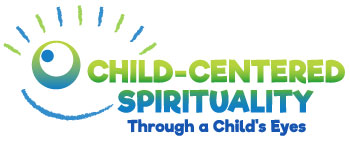 “To love at all is to be vulnerable. Love anything and your heart will be wrung and possibly broken.” –C.S. Lewis
“To love at all is to be vulnerable. Love anything and your heart will be wrung and possibly broken.” –C.S. Lewis
Authors Charles R. Ridley and Robert E. Logan inspired me to reflect on the push-pull of desiring to cultivate compassion in children while simultaneously shielding them from emotional pain. If we want to invest in the development of a child’s compassionate heart, there are costs involved. We decide for ourselves whether the cost is worth it.
Cost—A child’s awareness of emotional pain
 When a family is touched by disappointment or loss, isn’t our natural inclination to run, to find a way to protect ourselves and our children? “To care—at a deep and authentic level of our spirits—opens us up to pain,” says Ridley. Certainly we monitor how many details the child knows. We also stay emotionally connected with them through their discomfort as they find composure in the knowledge that they need not fear emotional pain.
When a family is touched by disappointment or loss, isn’t our natural inclination to run, to find a way to protect ourselves and our children? “To care—at a deep and authentic level of our spirits—opens us up to pain,” says Ridley. Certainly we monitor how many details the child knows. We also stay emotionally connected with them through their discomfort as they find composure in the knowledge that they need not fear emotional pain.
Cost—A child’s feelings of inadequacy
When children recognize that hardships have entered life—their life or someone else’s—they learn that they are not able to fix it or change it. We’re tempted to step in and pump them up with positive affirmations because we want them be confident and happy. Yet to develop a compassionate heart we must leave children with their feelings of being powerless. We come alongside them to help them form their own healthy way of handling these feelings.
Cost—An adult’s mandate to show compassion in action
We are busy people. “Still, we realize that kids learn from what we do more than from what we say. So we stop what we’re doing and tend to a person who needs help especially when it is not convenient to do so,” noted Signe Whitson. “We hold ourselves back before speaking in a frustrating interpersonal interaction. This is costly when we are tired and swamped by many responsibilities.”
Tweetable: If we want to invest in the development of a child’s compassionate heart, there are costs. See more here. Click to Tweet
